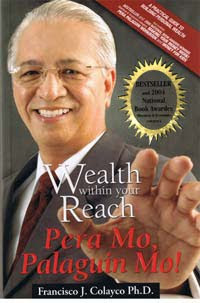What is microfinance?
Microfinance is the provision of a broad range of financial services to the poor and low-income households and their micro-enterprises (with P3M in assets or less).
How is BSP involved in microfinance?
The General Banking Law mandates BSP to set the rules for its practice in the banking sector. It is BSP ’s flagship anti-poverty program.
What microfinance services do banks usually offer?
Banks with microfinance operations typically grant loans and accept deposits.
Is there demand for other microfinance services?
As the microfinance industry develops, there is demand from clients for a wider range of services. It has been
proven that various financial services may be delivered sustainably through microfinance.
Aside from loans and savings, what microfinance services may banks offer?
BSP now allows eligible banks to come up with and offer their own housing microfinance and micro-agri loans; and to market, sell and service the microinsurance products of licensed insurance providers.
What is housing microfinance?
Housing microfinance applies microfinance principles (cash flow-based, frequent amortization, collateral-free,
etc.) to the provision of housing loans.
Who are qualified for housing microfinance?
• Existing MFI clients
• New clients normally eligible for microfinance loans based on banks’ policies
• Borrowers qualified for the Credit Surety Fund, a program for small businesses to obtain bank credit
For what purposes may the housing loan be used?
The loan should be used to build a house; acquire a lot or house and lot; or for home improvement or repair.
The acquired lot may be used for business.
How much is the microfinance housing loan?
Clients may get up to P300,000 for house construction and/or lot acquisition and up to P150,000 for home improvement or repair.
What are the terms of payment? Clients may pay up to 15 years for house construction and house and lot acquisition and up to five years for
improvement and repair.
What are micro-agri loans? Micro-agri loans are credit for small farming activities.
Who may obtain a micro-agri loan?
The loan is for an existing microfinance borrower engaged in a farm activity for two years or more. For risk
management, the borrower must have an off-farm livelihood activity to ensure payment amid agricultural seasonality.
For what activities may the micro-agri loan be used?
The loan may be used for farm activities, agri-business and agri-related fixed assets, among others.
What is the amount of the micro-agri loan?
The loan may reach P150,000. Loans start small and increase in succeeding loans.
What is the term of payment?
The loan term is up to 12 months.
What is microinsurance? It is an activity providing specific insurance, insurance-like and other similar products and services that meet
the needs of the low-income sector for risk protection and relief against distress, misfortune and other events.
How much would clients pay for insurance? Premiums, contributions, fees or charges—computed on a daily basis—do not exceed five percent of the current daily minimum wage for non-agricultural workers in Metro Manila.
What is the maximum benefit amount? The maximum sum of guaranteed benefits may reach up to 500 times the daily minimum wage rate for nonagricultural workers in Metro Manila.
What institutions provide microinsurance? Insurance companies, cooperative insurance societies, and mutual benefit associations licensed by the Insurance Commission may provide this service. Banks may market, sell and service the microinsurance products of these institutions, provided they meet BSP requirements.
For the list of banks with microfinance functions, click here.



























